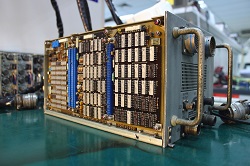Leading-edge architecture tackles safety and certification hurdles in embedded systems
The foundations for this integration are mechanisms for temporal and spatial partitioning. This includes the combination of software virtualisation and hardware segregation, and the extension of partitioning mechanisms to jointly deal with important requirements such as time, energy and power budgets, reliability, safety and security. Supporting integration of functions with different criticality on shared platforms Platforms that encompass networked multi-core chips will also be required in many mixed-criticality systems. In addition, today’s technology does not support the manufacturing of electronic devices with failure rates low enough to meet the reliability requirements of ultra-dependable systems. To address these challenges, the EU-funded project DREAMS(opens in new window) “introduced a cross-domain architecture and design tools for networked complex systems that support the execution of application subsystems of different criticality levels on networked multi-core chips,” says project coordinator Prof. Roman Obermaisser. The focus was on three application domains: avionics, wind power and healthcare. Architectural style to guide mixed-criticality system development By consolidating and extending architectural concepts from previous projects (e.g. ACROSS, ARAMIS, GENESYS, RECOMP), DREAMS introduced a new architecture style for the seamless virtualisation of networked embedded platforms. These platforms range from multi-core chips to cluster level with support for security, safety and real-time performance, as well as data, energy and system integrity. It defined a waistline architecture with domain-independent platform services. Such services can be successively refined and extended to construct more specialised platform and application services. DREAMS’ deliverables include certifiable platform services for virtualisation and segregation of resources at cluster and chip levels. Its adaptation strategies for mixed-criticality systems deal with unpredictable environment situations, resource fluctuations and the occurrence of faults, while ensuring predictability and safety. Integrated resource management was introduced for mixed-criticality systems involving monitoring, runtime control and virtualisation extensions that recognise system-wide, high-level constraints, such as end-to-end deadlines and reliability. Project partners established a model-based methodology and prototypes of tools for mapping mixed-criticality applications to heterogeneous networked platforms, including algorithms for scheduling and allocation, analysis of timing, energy and reliability. As a foundation for modular certification, they provided modular building blocks that can be combined in a safety case for certification and increase the reuse possibilities of available evidence. To validate the DREAMS approach, team members developed avionics, wind power and healthcare demonstrators. The demonstrators used and assessed the platform, tools and certification/development methods. Lastly, DREAMS guided and boosted European research and technology awareness in distributed mixed-criticality and embedded computing systems. A mixed-criticality forum(opens in new window) and a code repository were set up to provide news about events on mixed-criticality systems, projects, research results, technological building blocks and links to further information. Cost and operational savings across the board Prof. Obermaisser explains that the diminished need for overprovisioning of hardware resources will cut material and maintenance costs. Simpler hardware, reduced wasteful spatial separation of components, less wiring and fewer component types will also significantly drop operational costs. “By design, DREAMS will enable the integration of systems mixing different criticality levels at a cost much lower than the compound of individual systems,” he concludes. “Results will lead to a significant reduction in development, life cycle and certification efforts, and enable mixed-criticality product lines.” A book will be published summarising the DREAMS goals, approach and achievements. Two other EU-funded projects are currently extending the DREAMS architecture for power/energy efficiency and train control and management systems.







